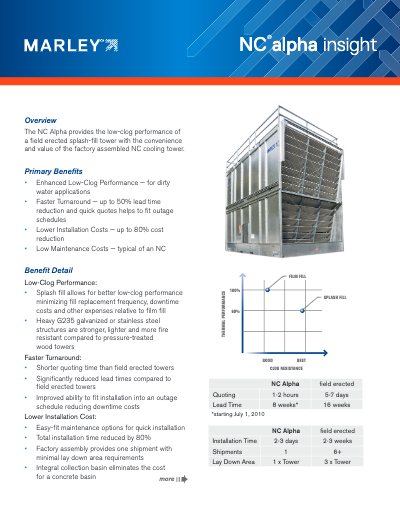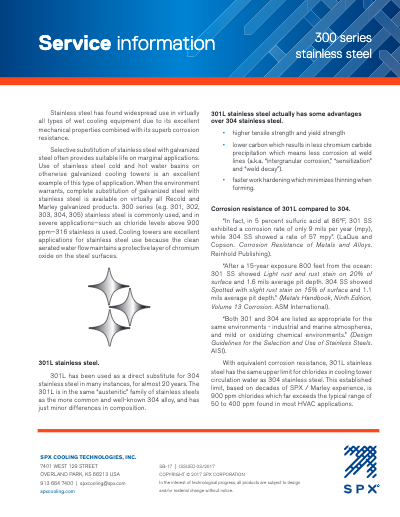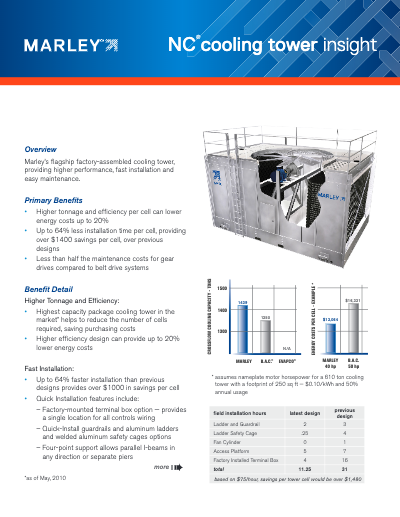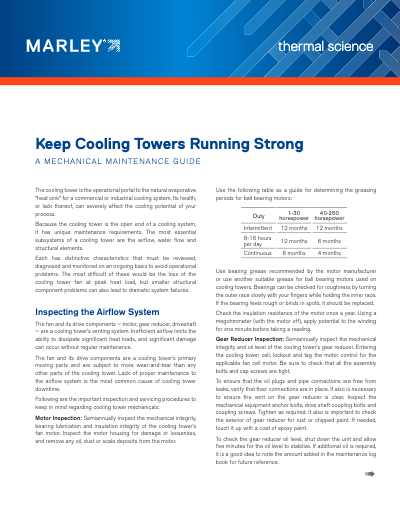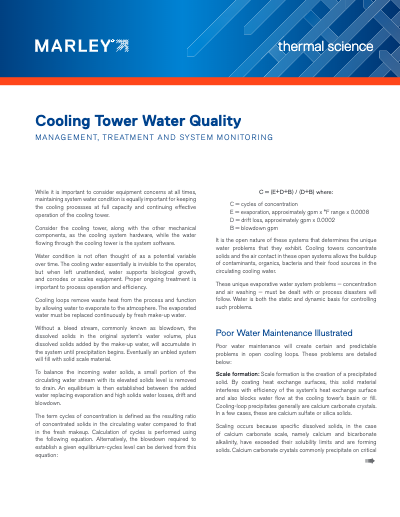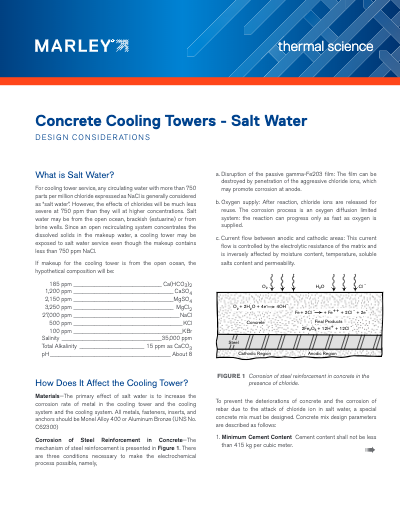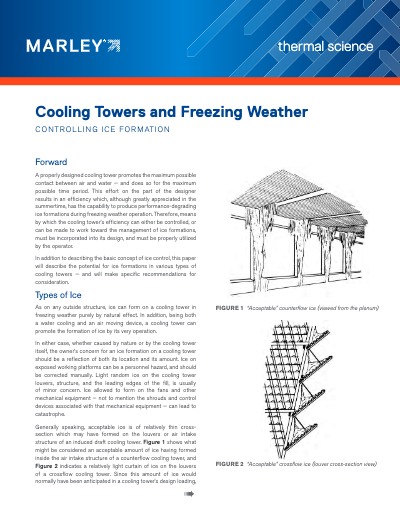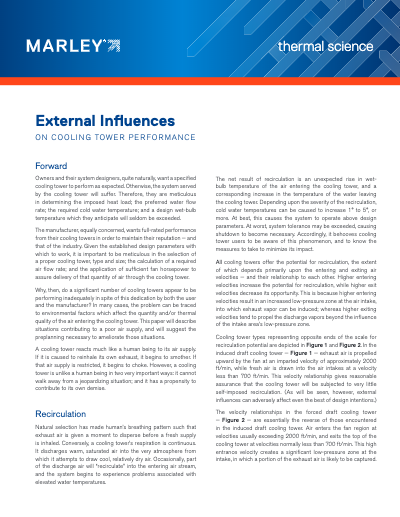Marley Insight – NC Alpha Cooling Tower
The NC Alpha provides the low-clog performance of a field erected splash-fill tower with the convenience and value of the factory assembled NC cooling tower.
Marley Insight – Safety Process
Marley is committed to construction safety and our results prove it. Better safety also means faster project completion and lower installation costs for customers.
ASHRAE Guideline 12-2000 Legionellosis
Minimizing the Risk of Legionellosis Associated with Building Water Systems.
Posted with permission from ASHRAE ©2000. This document may not be copied nor distributed in either paper or digital form without ASHRAE’s permission.
Contact ASHRAE at www.ashrae.org.
Operating Cooling Towers in Freezing Weather
A properly designed cooling tower promotes the maximum possible contact between air and water—and does so for the maximum possible time period. This effort on the part of the designer results in an efficiency which, although greatly appreciated in the summertime, has the capability to produce performance-degrading ice formations during winter operation.

